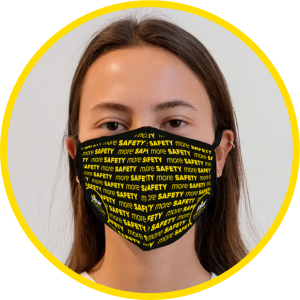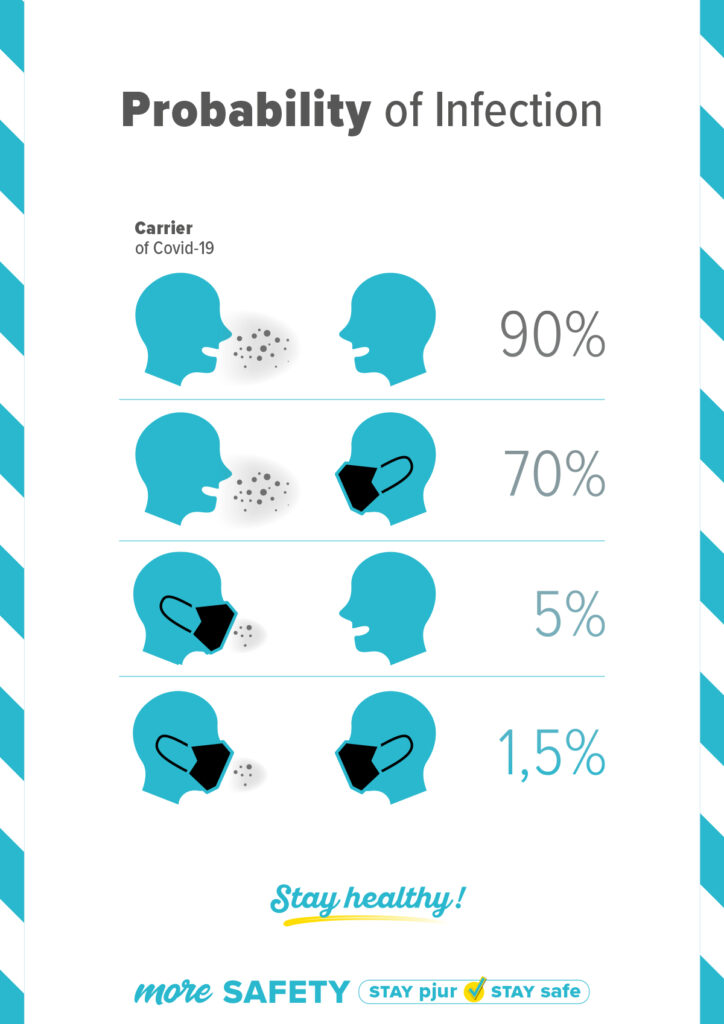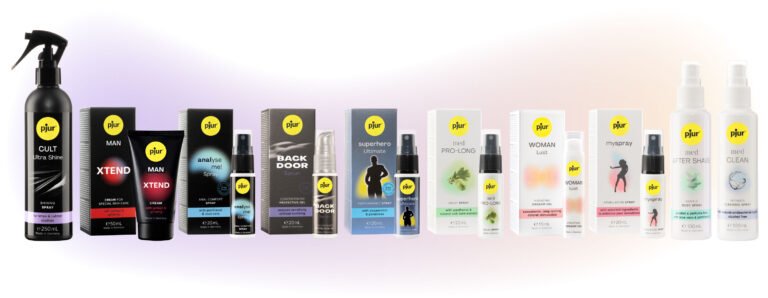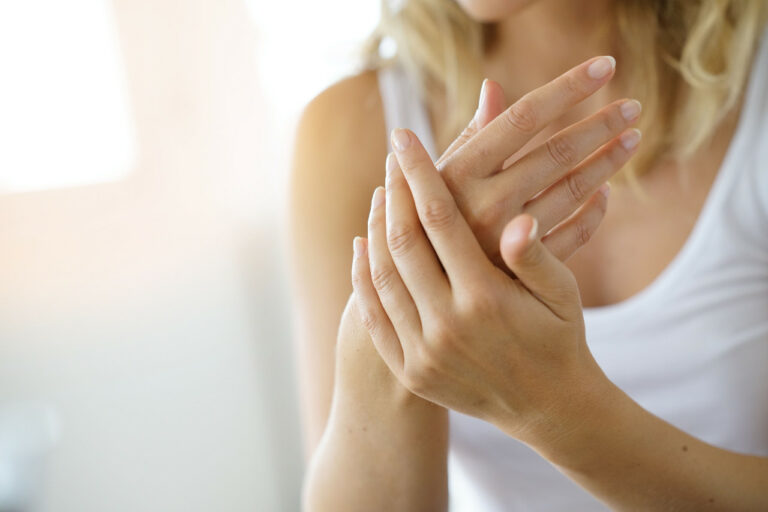Face Masks – Everything You Need to Know and What to Bear in Mind
13 May 2020
It has been introduced in countries such as Austria, Italy and Spain, and it’s now mandatory in all German states, too: the obligation to wear masks when you’re out shopping or on public transport. But how does it protect us, what do you need to keep in mind to ensure the best possible protection and what exactly counts as an effective face mask? We’ve taken a closer look at this topic and we’re here to give you the answers.
What counts as a face mask?
Generally sp eaking, face masks can be grouped into three different types:
eaking, face masks can be grouped into three different types:
- Cloth masks, also known as mouth and nose masks, DIY masks or community masks: Due to the shortage of face masks during the coronavirus outbreak, companies and even individuals increasingly began to sew fabric face masks. They are usually made from cotton. Tea towels, T-shirts and old pillowcases have all been used to make them.
- Surgical masks, or medical masks: Usually green or blue, we are probably all familiar with these masks from hospitals. They are designed for single used and protect

medical-mask-5085513_1280
patients from potential bacteria and viruses.
- Respirator masks, also called medical FFP2/FFP3 masks: These masks are used primarily in medical settings. They filter particles and aerosols from the air. Those without an exhalation valve protect both the wearer and those around them, while those with an exhalation valve only protect the wearer.
How effective are face masks?
We need to distinguish between the three different types of masks when it comes to how effective they are too:
- Cloth masks, also known as mouth and nose masks, DIY masks or community masks: Wearing this kind of mouth and nose masks reduces the amount of saliva droplets ejected when speaking or coughing. This can protect other people, and the wearer is also exposed to fewer of the virus and bacteria particles found in the air. The advantage of these fabric face masks is that they are reusable, washable and breathable.
- Surgical or medical masks: These face masks also provide protection from droplets ejected by the person wearing them. They are therefore primarily for protecting others.
- Respirator masks, also called medical FFP2/FFP3 masks: FFP are the safest kind of mask, as they don’t allow any viruses or bacteria in or out – provided they don’t have a valve. Respirator masks with a valve only protect the wearer, as the air breathed out escapes through the valve, and with it viruses and bacteria.
The main reason behind wearing face masks is not to protect the people wearing them but to protect those around them. Because the coronavirus pathogen is often transmitted in droplets when a person coughs or speaks, by wearing a face mask everyone protects those around them from getting infected, thus helping break the chain of infection. This can be seen in the graphic below:

The mouth and nose masks described above are more than adequate for this purpose. Surgical masks and FFP masks should be reserved for medical professionals.
Tips to ensure the best possible protection
Anyone who wears a cloth mask or surgical mask will already be protecting others against infection, thereby helping to break the chain of infection. But to make sure it is really effective, there are a few things you also need to bear in mind when you wear your mask:
- Before putting your mask on, you should either wash your fingers with soap or disinfect them with sanitizer.
- Only touch your mask by the elastic that goes behind your ears or by the straps that you tie behind your head.
- Your mask should be a snug fit. Make sure there isn’t a big gap between your mask and your face. You will need to pay particular attention to this if you have a beard or wear glasses.
- When you are wearing your mask, you should still make sure you don’t touch your face or mask. You can still spread the virus if you do.
- When you take your mask off, please only touch it by the elastic or the straps you tie behind your head. Don’t touch the front of your mask when you take it off, as there may be viruses there.
- Once you have removed your mask, you should wash and disinfect your hands again.
Face masks – How many times can they be reused?
How many times you can reuse your face mask depends on which type you use. The surgical masks described above are only designed for single use and should not be reused. Fabric face masks can be reused. Follow the manufacturer’s washing instructions to do this. The following tips will also be useful:
- You should ideally wash your fabric face mask after each use. However, it should always be washed if there are visible signs of dirt or if it is damp.
- Most fabric masks can be washed at between 60 and 90 degrees Celsius, which will kill any bacteria or viruses.
- Alternatively, you can also put your fabric mask in a water bath for five minutes and boil it.
FFP masks are guaranteed to be effective for several hours. After all, they are used in hospitals and other similar settings. Some can also be reused, and these are usually marked with an “R” for “reusable”.
You should still observe social distancing rules and other hygiene regulations, even when you’re wearing a face mask. We will only be able to stem the spread of the virus if we all stick to these rules. That’s why we’ve developed our pjur DESINFECT hand sanitizer for you. Let’s all help to break the chain of infection!


